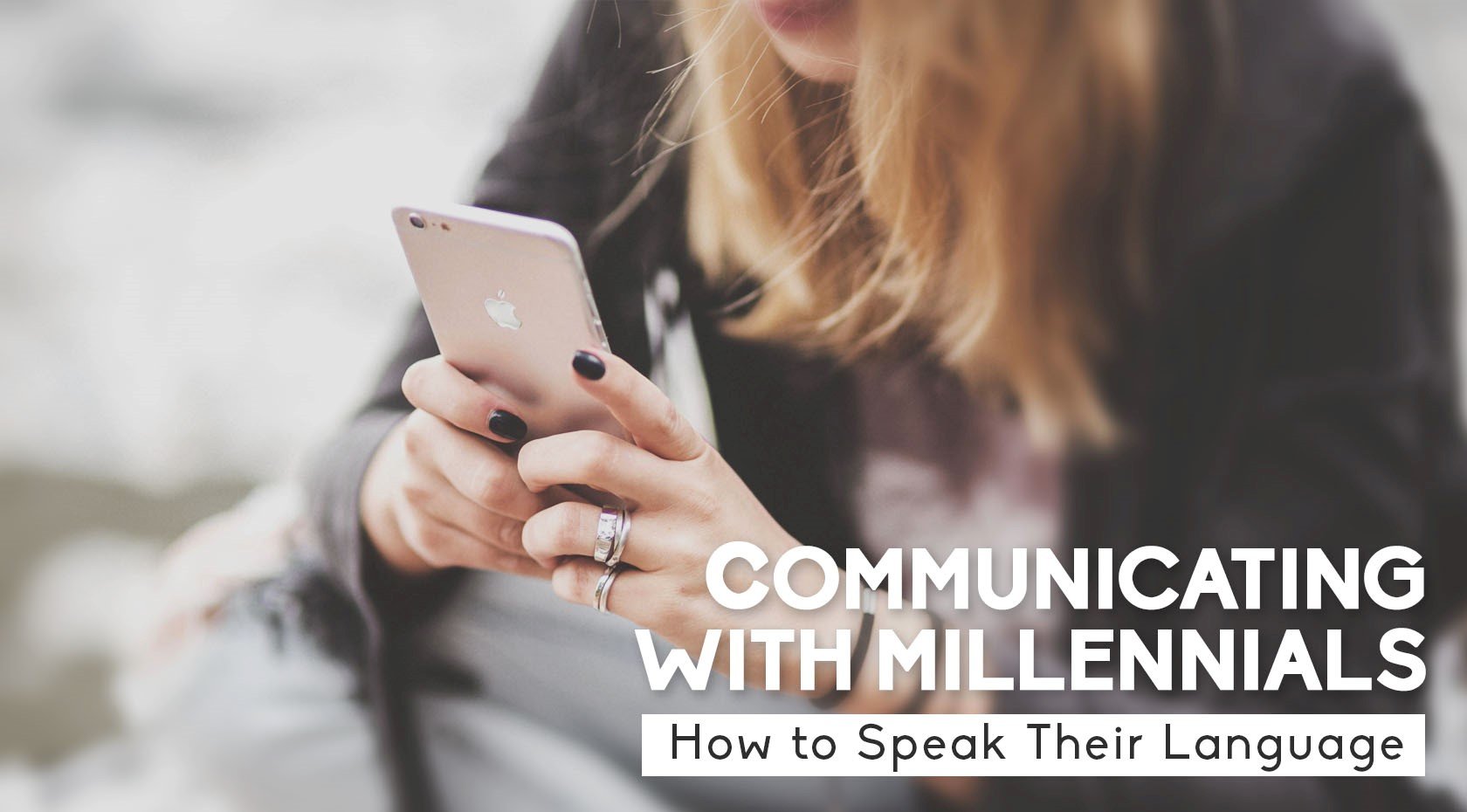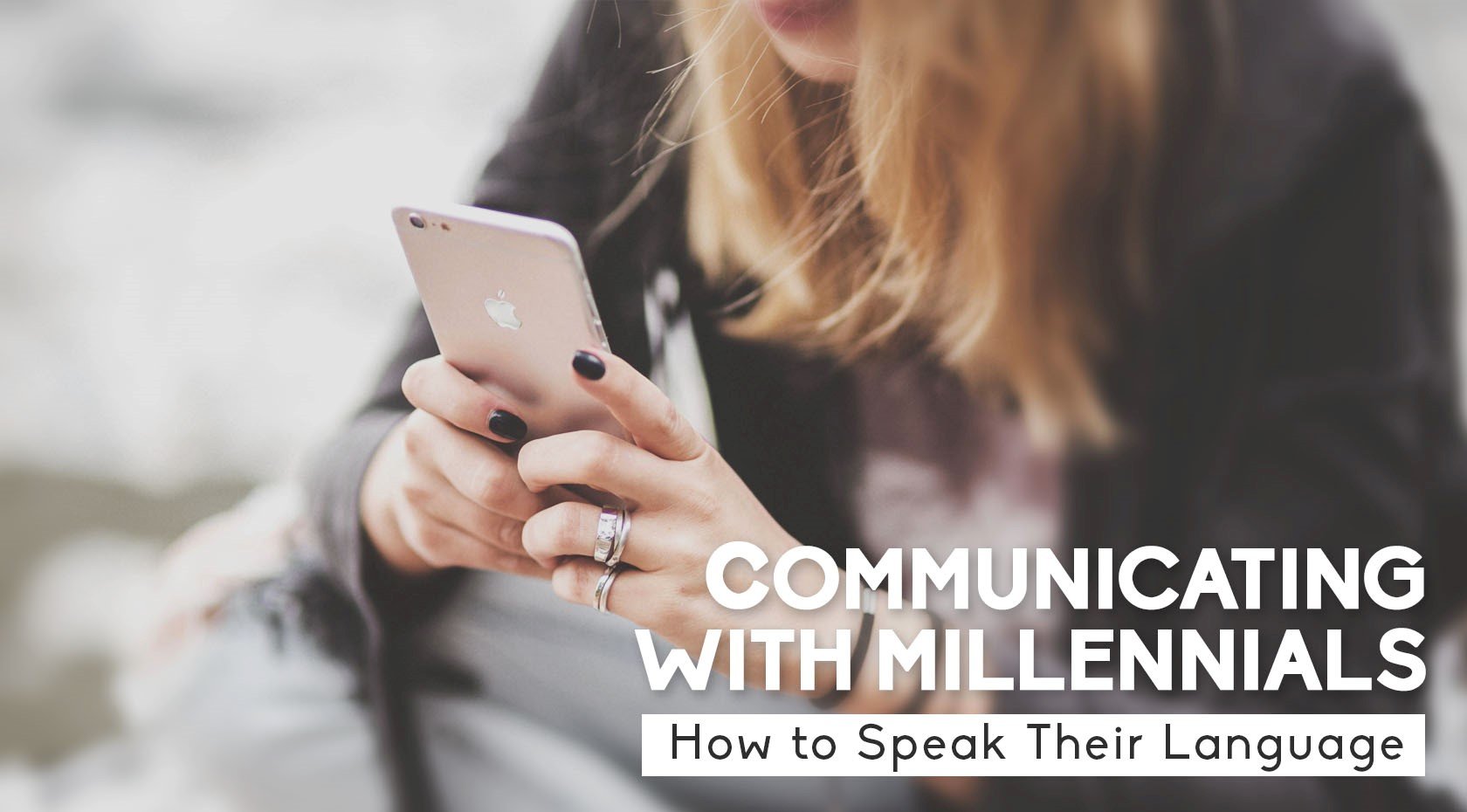
Millennials are no longer a generation reserved for marketers looking to appeal to a younger audience. Born between 1980 and 2000, the millennials are quickly taking over and becoming one of the largest and most powerful generations of all time.
They make up one-fourth of the population, include 79 million people, and have $170 billion in annual purchasing power, via Comscore.
They already control a huge part of our economy and their impact will continue to grow. If your organization wants to tap into this powerful, up-and-coming generation, you are likely going to need to make a few changes to your marketing.
Millennials have communication styles that are starkly different from other generations, and you can’t use the same tactics you used to talk to the generations that came before them. You need to learn to speak their language if you want to reach them.
1. Be Authentic & Transparent
Millennials can smell a fraud from a mile away. Traditional sales tactics and pushy marketing don’t work on them. Only 6% of millennials consider online advertising to be credible, says SocialChorus.
Don’t try and hide ulterior motives or slip sales messages through to them. They will uncover your misleading message (and maybe even take to social media to share their opinion about it).
2. Don’t Take Yourself Too Seriously
Sneaky messaging won’t work on millennials and neither will forced, terse robotic language.
Millennials are less likely to trust and show loyalty to companies that sound corporate and generic. They prefer brands that look, act, and sound friendly, cheeky, and personable.
Don’t overdo it on the corporate language and talk to millennials like they are friends, not potential customers.
3. Don’t Bury the Message
When creating content for millennials, remember that you don’t have much time to hold their attention.
A survey conducted by Fraclt and BuzzStream found that millennials prefer content that is roughly 300 words. While other generations agreed that 300 words was a sweet spot when it came to content length, the millennials preferred it more than any other generation.
If you are writing content to reach this generation, keep is short, concise, and presented in a way that makes it easy for them to find the main takeaways and messages.
4. Entertain While You Inform
The same study showed that millennials prefer entertainment over any other genre of content.
When delivering information to this generation, try to create infotainment — content that both entertains and informs.
This style of content will make it easier for you to catch and hold the attention of millennials all while sharing details about your brand, products or services.
5. Use a Variety of Content Delivery Methods & Styles
Millennials have hundreds of content-rich apps at their disposal, and they frequently jump from platform to platform looking for new content.
President and co-founder of Mental Floss, Will Peearson said that millennials change their attention between platforms up to 27 times an hour.
So don’t focus all of your energy on connecting with millennials through one platform. Publish in multiple locations so that you can offer a variety of styles and lengths of content (such as short posts on Facebook and Twitter, videos on YouTube, and longer posts on your blog).
6. Communicate Both Ways
Don’t force your messages on millennials. Instead, engage in conversation that goes both ways, especially through social.
Forbes reports that if a brand engages with a millennial on a social network, the millennial is 62% more likely to become a loyal customer.
Start a conversation with your fans and followers instead of making your posts all about your brand, products, and services.
7. Go Digital With Your Delivery Methods
With so many screens and ways to communicate, It’s no surprise that millennials use face-to-face communication less than any other generation.
“Because many of them prefer working asynchronously, in a 24-7, multi-media world, they don’t want to take the time for the traditional face-to-face communication methods,” says Michele Norris, Founder of Navigen Leadership and expert on millennial communications.
Millennials are more likely to go to a digital platform, instead of a salesperson, to find the information they need about a service or product.
So, provide them with fresh and updated online data that offers them the information they need to learn about your brand, products, and services. Then, think about how you can provide digital information in brick-and-mortar elements of your business, such as using digital signs to give product demos or provide information where customers can research products in the store.
8. Include Others In Your Conversations
Millennials care less about what brands say and more about what their friends say. According to Shoutlet, 95% of millennials say that their friends are the most credible source of product information.
This generation believes in the power of reviews, so make sure that you are collecting reviews and placing them front and center. Seeing what others say about a brand or service will increase the trust that a millennial has for a brand.
9. Start the Conversation Now
As millennials become one of the largest and most powerful generations in our history, your brand better be ready.
Once you understand how to speak the language of the millennials, audit your current marketing promotions and platforms to make sure your messages match the needs and wants of millennials.
Are your marketing promotions in a voice and tone that will connect with millennials? Is your brand utilizing the right digital platforms? Are you positioning your company in a way that millennials will respond to?
Are you speaking the language of a generation that controls billions of dollars of spending a year?
